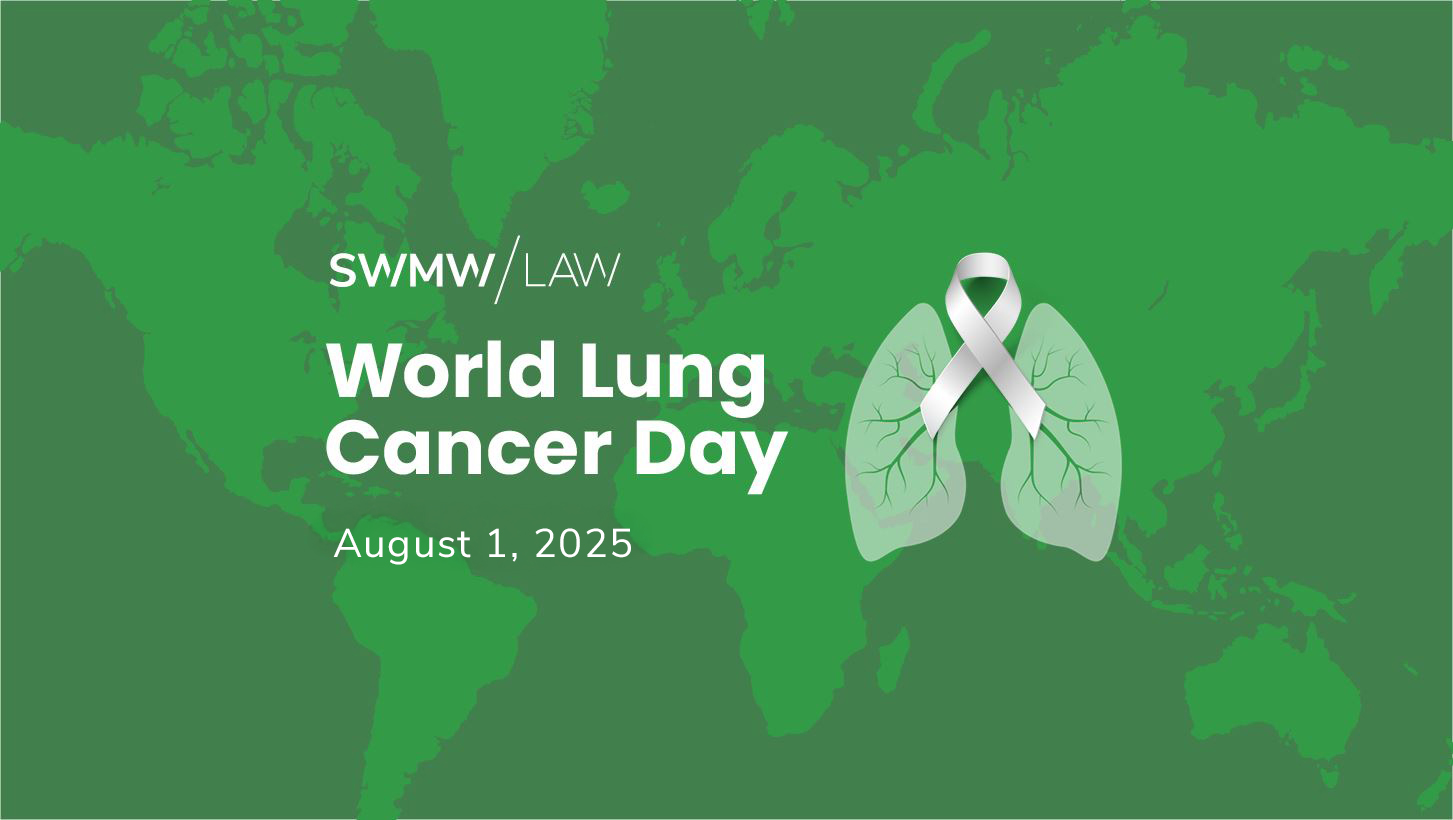On World Lung Cancer Day, we remember a few sobering statistics.
According to the Centers for Disease Control, lung cancer is the third most common cancer in the United States. More people, men and women alike, die from lung cancer than from any kind of cancer.
In addition, the American Cancer Society (ACS) estimates over 200,000 new cases of lung cancer will be diagnosed this year, and more than 120,000 people will die from the disease. ACS also notes that 1 in 5 of all cancer deaths are caused by lung cancer.
And, according to the World Health Organization, lung cancer kills more people than colon, breast, and liver cancers combined.
World Lung Cancer Day was first observed in 2012 and continues to take place every year on Aug. 1. On this day, patients, families, doctors, researchers, and advocates raise awareness about lung cancer. People and organizations share information and stories about lung cancer’s causes, the importance of screenings, treatments, patient advocacy, research, and survival.
A Hidden Danger: Asbestos and Lung Cancer
While smoking is widely recognized as a major cause of lung cancer, another lesser-known yet highly lethal factor is asbestos exposure. Asbestos-related lung cancer is particularly aggressive and often emerges decades after the initial contact with asbestos materials.
These cancers develop as tumors inside lung tissue, limiting the lungs’ ability to transfer oxygen. Because symptoms can take years to appear and are often mistaken for less serious health issues, diagnosis is frequently delayed. Common early symptoms include persistent coughing, pain in the chest or back, difficulty breathing, hoarseness, trouble swallowing, and fluid buildup in the lungs.
Treatment options remain limited, and the prognosis for patients with asbestos-related lung cancers – such as mesothelioma – is generally poor.
How Asbestos Leads to Lung Cancer
From the 1950s through the 1980s, asbestos was widely used in buildings and products across the United States due to its durability, light weight, and resistance to heat. It was a staple in insulation, construction materials, and even household items.
Disturbing asbestos-containing materials – whether during renovations, repairs, or regular use – can release microscopic fibers into the air. Once airborne, these fibers can be inhaled or ingested, embedding themselves in lung tissue or other organs. Over time, this causes inflammation, scarring, and ultimately, cancer.
Even today, asbestos exposure remains a danger. From schools and workplaces to consumer goods, many individuals are still at risk. In the U.S. alone, asbestos is linked to over 39,000 deaths annually, often compounded by financial hardship due to medical expenses and lost wages.
Workers in trades such as construction, shipbuilding, and manufacturing have historically faced the greatest exposure. However, research confirms that there is no “safe” level of asbestos contact – even minimal exposure carries health risks.
Ways to Participate in World Lung Cancer Day
The Lung Cancer Foundation of America is hosting a full schedule of virtual events today, featuring discussions from patients, doctors, researchers, and advocates. Sessions cover a range of topics and are available for live viewing on Facebook and other social-media channels.
Here are some simple ways you can contribute:
- Share facts about lung cancer screenings and encourage those you love to get checked.
- Post information about lung cancer symptoms – such as a chronic cough, blood in mucus, wheezing, voice changes, fatigue, or unexplained weight loss.
- Support organizations fighting lung cancer through donations or volunteer work.
- Offer your time to local hospitals or charities aiding those affected by lung cancer.
Our Commitment at SWMW Law
At SWMW Law, we witness daily the strength and resilience of our clients facing lung cancer. Many of these individuals were exposed to asbestos through no fault of their own – often in workplaces that failed to provide proper safety measures.
Our mission is to stand by these patients and their families. We work tirelessly to secure justice, advocate for their rights, and raise awareness about the ongoing danger of asbestos.
If you or someone close to you has been affected by an asbestos-related illness, we are here to help. Contact our team to learn more about your options and how we can support your journey.

